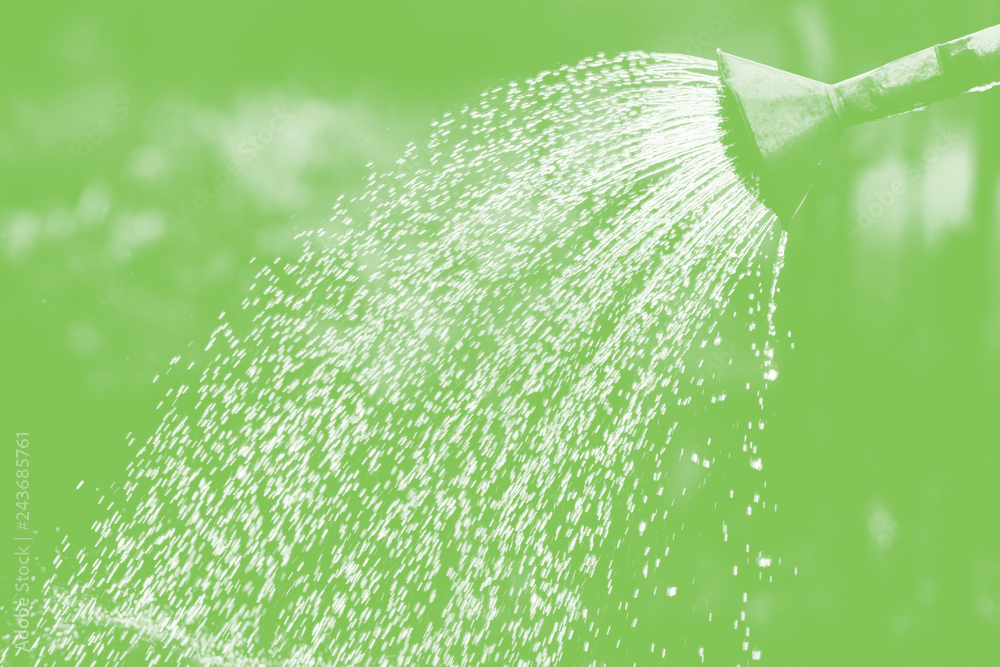
A Beginner’s Guide to Seeding Your Lawn
Lawn care is one of the most highly competitive and low-profit fields of work in the landscape business.
At The Plant Kingdom, we want to let great lawn companies do what they do best, so we can focus on what we do best- providing professional horticulture service and quality plants. We do carry small bags of grass seed as a courtesy to our customers who need to spot or repair seed areas in their lawn, so if you are wanting to seed yourself here are a few tips.
What Type of Seed Should I Use?
Turf type fescues and fescue blends (preferably one without Bluegrass). Contrary to our state slogan, Kentucky bluegrass does not perform well in Kentucky as a low maintenance turf type grass for your home. It has numerous disease and insect issues.
How do I Successfully Seed my Lawn?
Fall is one of the easiest times to seed because there is less weed pressure. Most lawn weeds are warm-season and will go dormant in the fall. Here is a step-by-step guide…
Prepare the area by cultivating the first ¼ inch of soil. Note: Just scattering the seed on an unprepared surface or using more seed than is recommended is a waste of time and money.
Scatter the seed on prepared surface per packaged application rate. Over-seeding is detrimental to the seeding process- no more than 5-10 seeds per square inch is recommended. Do not use pre-emergent fertilizer at the time of seeding.
Gently rake or walk over to lightly incorporate the seed into the prepared area.
Add mulch if needed. See list of mulch options below.
Types of Mulch
Wheat/Oat Straw: approximate application rate- 1 bale per 1,000 square feet.
Pros:
Shades the soil surface, which prevents evaporative moisture loss. If you have prepared and seeded correctly, then this is not a main concern in the fall.
It is the best solution where heavy erosion is a concern.
Cons:
Costly because most homeowners put down more than the recommended application rate. When spot or repair seeding you will not need an entire bale.
Holds moisture. When the seed germinates this moisture can cause leaf fungal diseases and even seed failure.
Time consuming. It will need to be raked up and discarded once seed as germinated
Wheat/Oat straw contains seeds that will also germinate and compete with your grass seed.
Visually unattractive.
Attracts birds to the area, eating both the wheat and grass seeds.
Pine Bark Soil Conditioner: approximate Application rate- 1 bag per 30 square feet available for purchase in-store and online
Pros:
Shades the soil surface, which prevents evaporative moisture loss. If you have prepared and seeded correctly, then this is not a main concern in the fall.
If entire bale is not needed, it can be used in other areas of the garden. Once seed is finished germinating the pine straw should be removed from the lawn and can also be used in other areas in the garden.
You will not get wheat/oat seeds growing in the lawn.
More visually appealing than straw.
Cons:
Shades the soil surface, which prevents evaporative moisture loss. If you have prepared and seeded correctly, then this is not a main concern in the fall.
How do I Care for My Newly Seeded Lawn
Once you have applied your seed and desired mulch, daily watering is required. The best way to accomplish this is up to 4 light watering sessions per day, no matter what type of mulch is used. This should continue for a period of 2-3 weeks, then gradually reduce your watering as the grass blades elongate.

